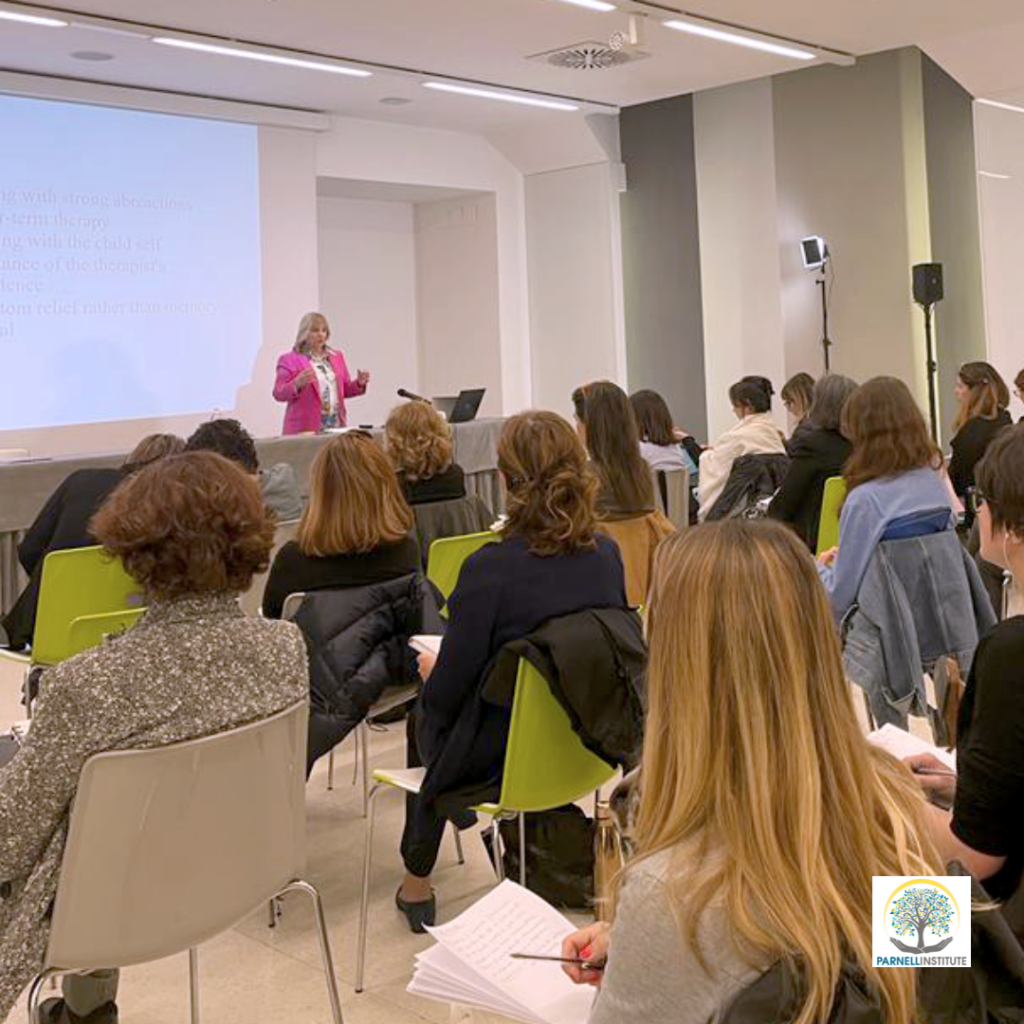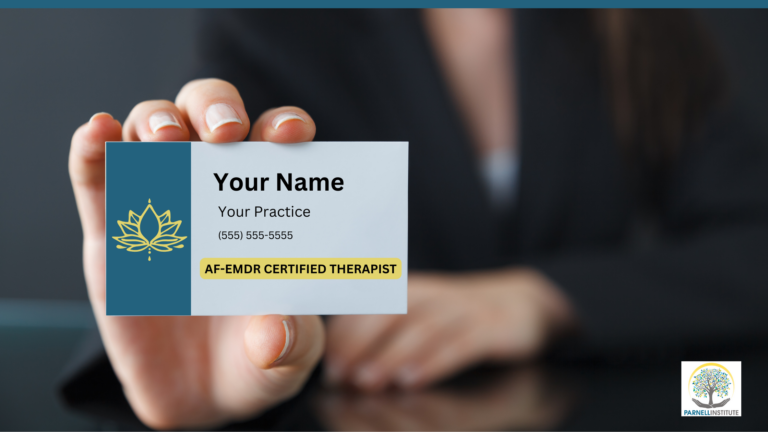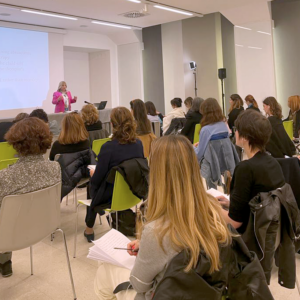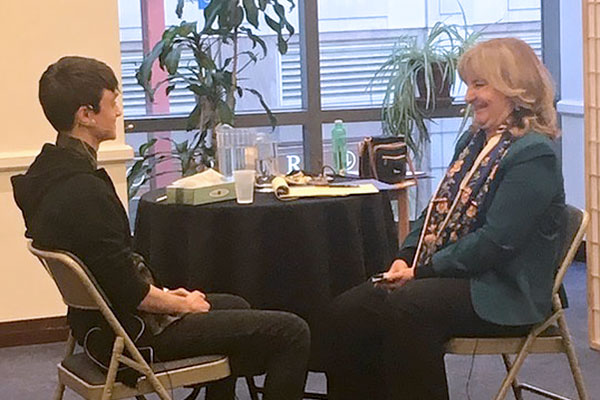Taking your therapeutic practice to the next level by earning an Attachment-Focused EMDR certification may seem overwhelming.
We get it. It’s a lot to think about, especially when you’re already busy balancing your practice and home life. At the Parnell Institute, we’re passionate about helping therapists like you take the next steps in your practice with ample learning opportunities and unparalleled support.
It’s important to note that to be eligible for certification, you must have earned a master’s degree or higher in psychology, social work, counseling, a behavioral health field, psychiatric nursing, or psychiatry with psychotherapy training.
Here’s what you need to know about our proprietary Attachment-Focused EMDR certification process from the Parnell Institute:
Step 1: Preparation
First, we’ll determine when you’re ready for certification. You’ll meet with a Parnell Institute Consultant or mentor for 20+ hours to get you prepared for AF-EMDR training.
Step 2: Complete Attachment-Focused EMDR Basic Training
Our three-part basic training provides comprehensive and supportive training that will allow you to integrate AF-EMDR into your practice successfully. We offer several virtual basic training sessions throughout the year, as well as some in-person options. First, you must complete basic training parts 1 and 2.
These first two basic trainings consist of 40 hours of Attachment-Focused EMDR training, taking place over two three-day increments scheduled within weeks of each other. In-person AF-EMDR training is done on consecutive days.
Following part 2, you will also receive 10 hours of consultation with one of our Consultants, where you will work on developing:

- history taking
- case conceptualization
- resource development
- target development
- using the modified protocol
- bridging
- interweaves
- session closure
Once you have completed parts 1 & 2, you must complete part 3 of basic training with a Parnell Institute Trainer.
Completing basic training requirements also includes reading A Therapist’s Guide to EMDR by Dr. Laurel Parnell.
Step 3: Complete At Least 2 Years of Clinical Practice Using AF-EMDR Post-Licensure
After completing basic training, you must use Attachment-Focused EMDR in your practice for at least two years to be eligible for certification.
Step 4: Obtain At Least 20 Hours of Consultation With a Parnell Institute Approved Consultant
We want to ensure you’re proficient in using AF-EMDR in your practice before obtaining your certification. One of our Parnell Institute-approved consultants or mentors will check your progress to determine your readiness and discuss any areas where you may need additional consultation hours.
Your consultant or mentor will verify in writing when you have fulfilled the required number of individual and group consultation hours. Of the 20 required hours, ten must be individual hours with the same Parnell Institute consultation. You may obtain the remaining ten through small group consultation.
To become a certified AF-EMDR therapist, you must show proficiency in several areas. This may seem like a lengthy list, but with AF-EMDR training from the Parnell Institute, you should be adequately prepared to master the following:
- an awareness and ability to describe and work with relational dynamics, transference, and countertransference
- an ability to explain complex PTSD, including attachment trauma and the impact of trauma on the brain, and how AF-EMDR addresses these issues in language a client can understand
- basic knowledge of child development, including social, emotional, and cognitive development and the impact of trauma at the different stages of development
- knowledge of the basic neuroscience of PTSD
- basic knowledge of attachment theory
- how to take a psychosocial history with an emphasis on developmental history, trauma, resilience, and attachment
- how to assess readiness for EMDR
- how to conceptualize cases, plan treatment, and develop and prioritize targets for at least two of the following: complex or ongoing trauma, generalized anxiety, core negative belief, somatic symptoms, addictive or self-destructive behavior, or intergenerational trauma
- how to prepare clients for AF-EMDR trauma processing, including the installation of the four foundational resources
- how to work with large T and small t traumas
- how to use the three-part protocol
- how to work with phobias, grief and loss, present-day symptoms, and recent traumatic events
- how to use bridging
- how to work with early childhood traumas
- how to work with processing difficulties, including simple dissociation, abreactions, and memory chaining
- how to utilize methods for blocked processing, including the use of interweaves and distancing techniques
- how to close incomplete sessions
- how to do developmental repair work, including the use of the ideal parents
- how to work in a client-centered way that recognizes and honors our individual and cultural backgrounds, including but not limited to racial, gender, sexual orientation, and class
- how to recognize, remain open to, and work with spiritual and transpersonal experiences

Step 5: Complete the Required Workshop
For certification, you must complete the live or recorded version of the 12-hour “Attachment-Focused EMDR Healing Developmental Deficits and Adults Abused as Children Workshop” by Dr. Laurel Parnell.
Step 6: Read the Required Books
There are four additional required reading materials you must complete for certification:
- Attachment-Focused EMDR: Healing Relational Trauma, by Dr. Laurel Parnell
- Tapping In, by Dr. Laurel Parnell
- Rewiring the Addicted Brain with EMDR-Based Treatment, by Dr. Laurel Parnell
- The Body Keeps the Score, by Bessel van der Kolk
Step 7: Provide a Write-Up of One Case
To become a certified AF-EMDR therapist, you must complete one full write-up of AF-EMDR with a client with complex PTSD through the entire course of treatment, including:
- developmental history
- preparation, including resource development and installation
- identification of goals of treatment
- clear case conceptualization
- target development and prioritization
- identification of root targets via the three-part protocol with or without bridge back
- desensitization
- use of interweaves for attachment repair, facilitating blocked processing, and closing incomplete sessions

Step 8: Session Review
The final step in the AF-EMDR certification process is for your Parnell Institute Consultant to review a client session. Upon review, they will assess your skill level according to the lists of competencies. You may complete another session review if you do not satisfy the required competencies. After two attempts, if your consultant feels you have not mastered them, they will recommend further consultation or training.
You have two options for session review:
- Video session review: You may send your consultant a good-quality video recording of one 50-60-minute AF-EMDR session with a client, peer, colleague, or other certification candidate with the required evaluation form provided in your application packet. This recording must show your and your client’s faces. If the video is with a client, you must provide a signed permission form from the client, which is also in your packet.
- Live or Zoom session review: Your consultant will observe a live session with your client in person or via Zoom. You must provide a one-page summary detailing your therapeutic history with the client, the skills you use, and the aspects of the AF-EMDR model that you utilize.
Once you complete these eight steps, you are eligible for Attachment-Focused EMDR certification from the Parnell Institute! Upon certification, you will be listed on our Attachment-Focused EMDR website as a certified AF-EMDR Therapist and receive a digital certificate.
Then, you can officially call yourself a certified AF-EMDR therapist, backed by exceptional Attachment-Focused EMDR training and support from the Parnell Institute!

Author: Parnell Institute
The Parnell Institute for EMDR is dedicated to quality education, service and research in the treatment of trauma. We recognizes the importance of treating the whole person—body, mind, heart and spirit—within his or her cultural context.



